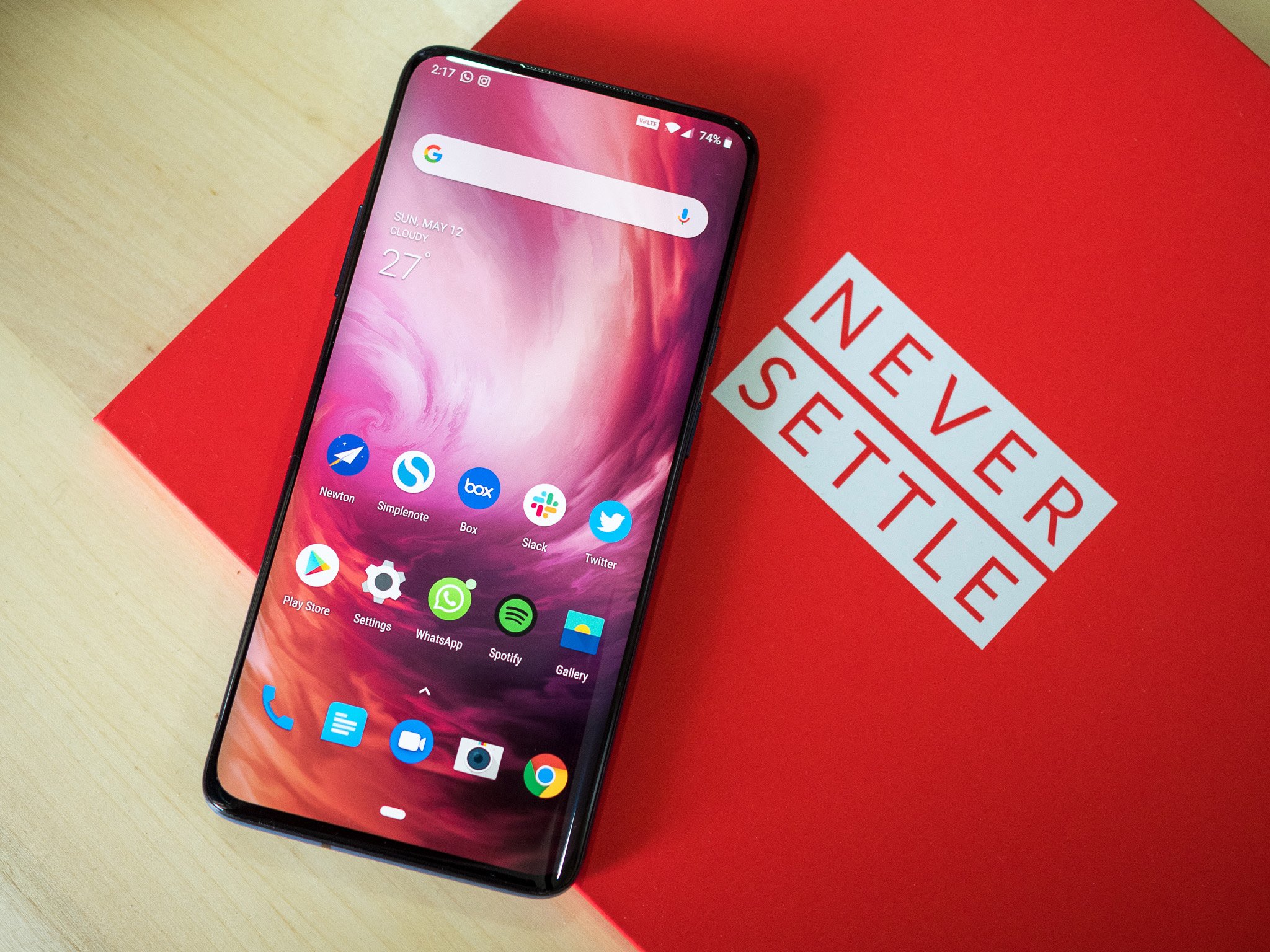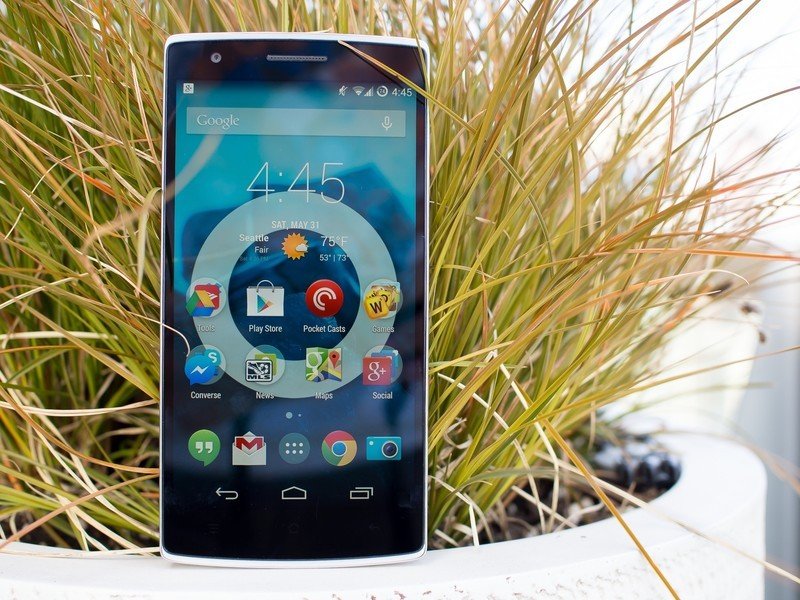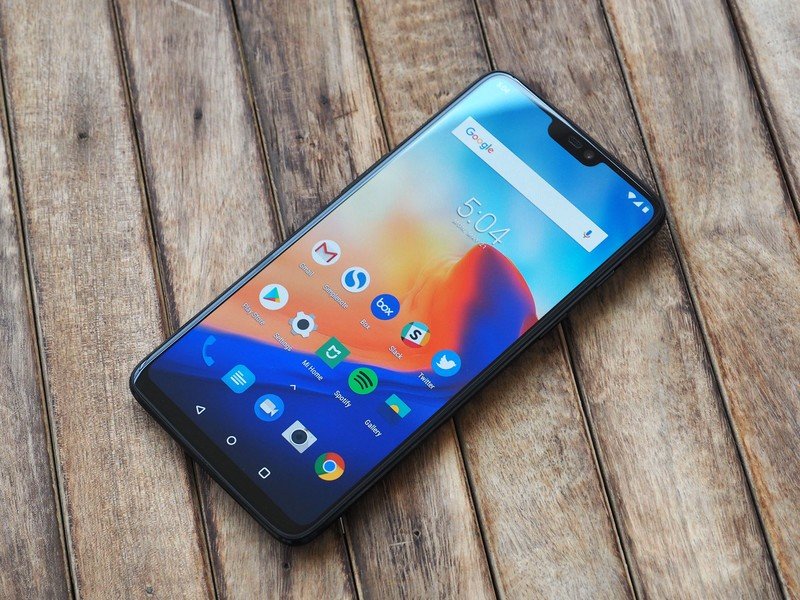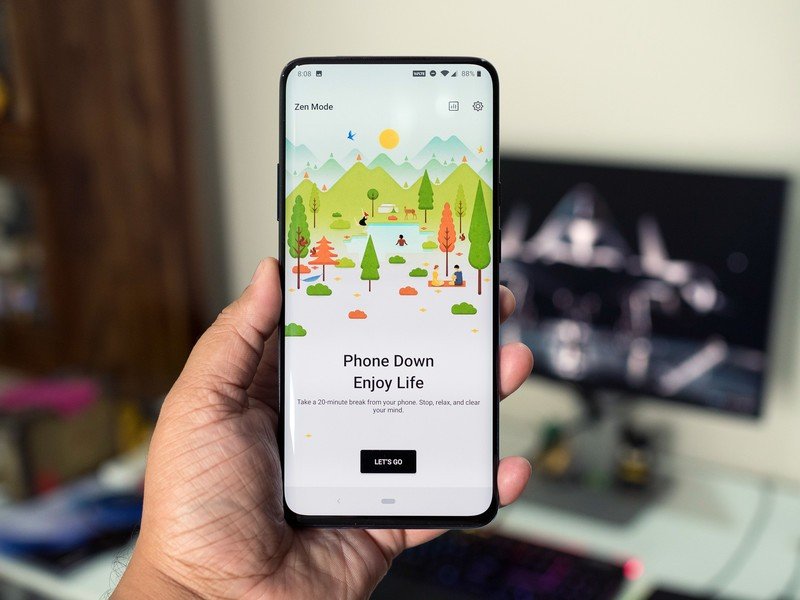Here's how OnePlus continues to perfect OxygenOS year after year

Over the weekend, OxygenOS hit a big milestone: it completed 1,500 days. As part of the celebration, OnePlus partnered with the World Wildlife Fund to plant trees for every tweet posted using the OxygenOS hashtag. Over the years, OxygenOS has evolved to become the best third-party skin on Android, striking an ideal balance between simplicity and customization.
A large part of OnePlus' success as a manufacturer revolves around OxygenOS. Sure, the manufacturer rose up the ranks over the years because of its ability to undercut the big players, but it wasn't the only one to do so. There's no shortage of phones that offer flagship-tier hardware at the same price point as OnePlus — devices from Xiaomi, OPPO, Huawei/Honor, Vivo and Realme come to mind — but the common theme among all of these phones is the software. As a general rule, the trade-off when buying a phone from a major Chinese manufacturer is a heavily customized user interface.
OnePlus has turned out to be the exception to this rule. From the very beginning, OxygenOS delivered a user interface that was close to stock Android, with a bloat-free design that's focused on customizability. OxygenOS 1.0 rolled out back in April 2015, with the build based on Android 5.0.1 Lollipop. Four years and a few dozen builds later, OxygenOS 9.5 continues to deliver on those same principles. In that time, OnePlus has grown exponentially as a device manufacturer, and is now a leading player in the premium segment in India. The Chinese manufacturer is also the flagship brand for BBK in the U.S., and has a decent market share in the UK as well.
With the OnePlus 7T on the horizon, I sat down with Szymon Kopeć, Global Head of Software Product Growth at OnePlus, to talk about OxygenOS' evolution and what we can look forward to from the next version of the skin. Before we get started, a little refresher on OnePlus' foray into the smartphone segment. The OnePlus One was unveiled on April 23, 2014, with the company announcing its partnership with custom ROM maker Cyanogen several months prior. The phone launched with CyanogenMod 11S out of the box, with custom features and Cyanogen branding at the back.

It didn't take long for OnePlus to ditch Cyanogen, because shortly after the OnePlus One launched in India, it was banned following a lawsuit by local handset maker Micromax. That led to a chain of events resulting in OnePlus deciding to develop its own skin. I started off by asking Kopeć about OnePlus' decision to come up with OxygenOS:
In the very beginning, the decision that we should have something like OxygenOS was pretty important for us. Because it wasn't that obvious for many people; we had CyanogenMod, and everyone liked it. Many people asked us at the time, 'Is it really necessary to have your own ROM? Can you not just use Cyanogen?' Another alternative for us was to go with Android Open Source Project (AOSP); that was doable. But we thought that to really differentiate our product, we needed our own ROM.This is especially true after all this time. When we see phones in the market right now, the difference in the hardware between the high-end and mid-range devices is not that crazy, but the difference is software is more pronounced. So that's why I think that our decision to launch our own ROM was a key point in our success.
OnePlus is obsessed about speed; there are few manufacturers that put such an emphasis on performance. Kopeć mentioned that the focus on speed is what continues to drive the development of OxygenOS. At one point, OnePlus thought of offering a more feature-laden interface, but it ultimately decided to stick to an aesthetic that was in line with pure Android. That was another key moment in the OxygenOS journey, says Kopeć:
When OnePlus was a smaller company, we were considering if we should go closer to pure Android or a little further away. We were trying to figure out a balance where we could introduce new features while at the same time keep the experience familiar. The goal was to make our community happy, because at that time everyone was a fan of pure Android. If you would've asked at that time whether OxygenOS or pure Android was better, 90% would've said pure Android. When we do our research now, we see that pure Android is not as preferred anymore, and OxygenOS is more preferred. We hear this from you guys as well, so our decision to balance feature additions while retaining the pure Android interface was a key moment.

Over the years, OnePlus saw a shift in its userbase. When it started out, its users were almost entirely made up of enthusiasts, but as it started gaining momentum, it picked up a more mainstream audience. The community aspect is what drove the initial development of OnePlus devices as power users engaged directly with the brand, so I asked Kopeć how OnePlus manages to cater to its community now that it is a mainstream player:
Get the latest news from Android Central, your trusted companion in the world of Android
Our process of introducing new features still relies heavily on our closed and open beta users; what you would call a geeky community. They have to approve of what we are doing, and we have a system in place with those users wherein if they don't like a feature, we are just not doing it. So our goal is to find that sweet spot between what would be useful for a vast majority versus catering to beta users. This mindset definitely changed our approach; it's much more difficult now than it used to be. Three years ago we could just ask on our forums and get feature suggestions, but now we need to get a deeper understanding of the market before we can introduce a feature.
It's that shift to a mainstream audience that makes things interesting, because OnePlus now has to balance the needs of a vocal core community with that of a broader populace:
We need of think of our community in a broader sense than we used to. During the initial days of our brand, pretty much all of our users were on the forums, giving us lots of feedback and suggestions. It was very easy to make a product they were happy with, because all you had to do was ask them what they wanted. But our community has seen a shift in recent years; now less than 15% of our community would be on the forums and be classified as geeks. That's very interesting, and a vast majority of our users now are people who want to have a great flagship device.So the biggest challenge for us is understanding not just the vocal community that attends our launches and shares their opinions on forums, but the needs of the broader set of users. Core users are still an extremely important part of our community, but we need to be aware of pain points affecting a majority of users and designing products accordingly. That involves a lot of primary and secondary research and reaching out to our users that don't participate in our forums.
This intricate juggling act of balancing the needs of the community means several features don't ever make it to the final product. Kopeć mentioned that OnePlus was going to create a set of themes for a festival in India, but had to ultimately reject the plan following feedback from closed beta users:
Great products are not necessarily about making decisions of what you want to do, but what you should not do. So, I read this interview of Snapchat's founder where he says 98% of features they're working on never see the light of day. The percentage is not that high at OnePlus, but it's high nevertheless. Especially at a closed beta level, a lot of the ideas that we're working on end up on the chopping block. We had an idea of launching a few thematic designs for one of the festivals in India, and after evaluating feedback from our closed beta users, we decided to not do it. At the end of the day, that's why we have them; they help us figure out what we should do and shouldn't.

Localization has been an area of focus for OnePlus this year, with the company rolling out exclusive features to users in India. With an added layer of features aimed at a particular market, I asked Kopeć about how this would affect software updates going forward:
We have done this in a pretty smart way that doesn't impact the frequency of updates at all. We have the global schedule for updates, so when we're aiming to release an OTA update for a specific device, we have a timeframe of a few weeks to add localized features. We can choose to add the features at that time, or roll out the update without them. For us, fixing bugs or releasing a new Android version is the most important thing; localization comes second.Another way we're trying to do this is by putting our apps in the Play Store. That makes updates smoother, and right now our launcher is in the Play Store. Soon, our SMS app will also be on the Play Store, and that makes the development of localization features smoother. This way, we can also roll out updates faster and not wait for an OTA."
Continuing on the subject of localization, I asked Kopeć about designing features tailored to an individual market:
Before we roll out localized features, we are first trying to understand user needs. This cannot be achieved with just a week-long trip to a country; that's why I'm in India for the last two years. We have a team of product managers, researchers, and designers here so that we can understand the issues facing our users in India. Doing this allows us to make sure that the localization efforts we're doing will impact their lives positively. That's why before we can localize for other markets, we need thorough insights.Right now, we're localizing features for India, and if any of those have potential for being useful in other regions, we will test them there. Work-Life Balance is one of those features; we're releasing it in India first, but there's no reason why it can't be available in other countries. We'll likely release the feature to our closed beta users in other markets and see what kind of feedback we receive.

Harish Jonnalagadda is Android Central's Senior Editor overseeing mobile coverage. In his current role, he leads the site's coverage of Chinese phone brands, networking products, and AV gear. He has been testing phones for over a decade, and has extensive experience in mobile hardware and the global semiconductor industry. Contact him on Twitter at @chunkynerd.
